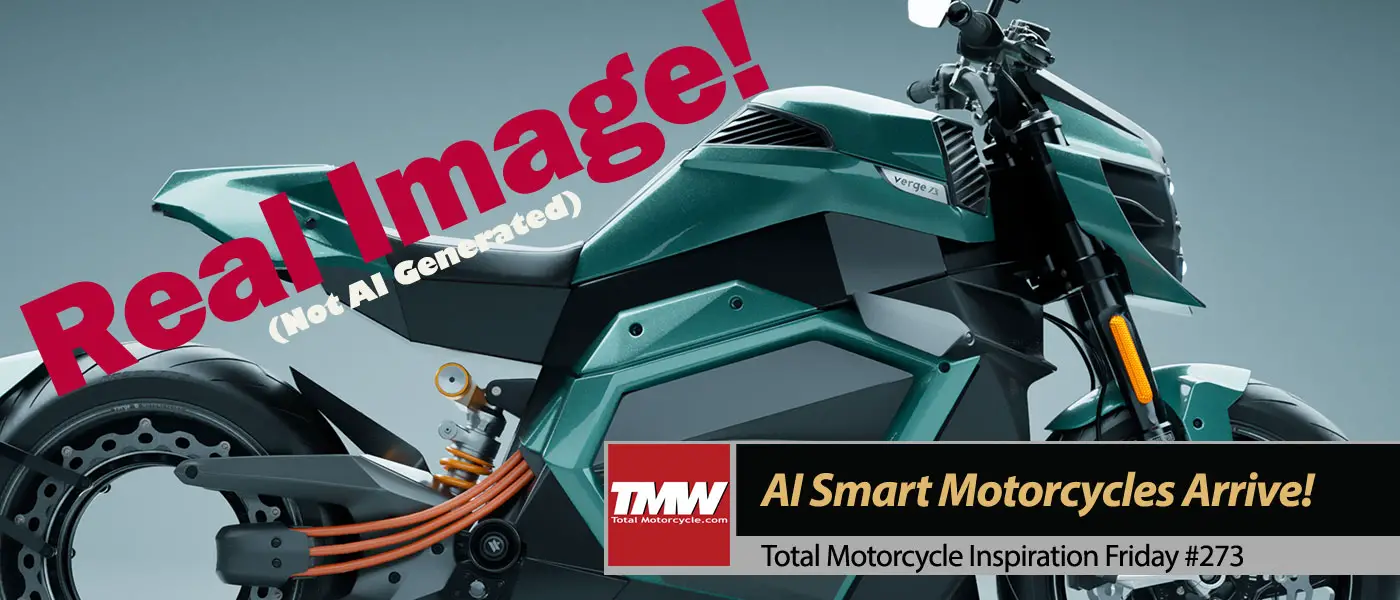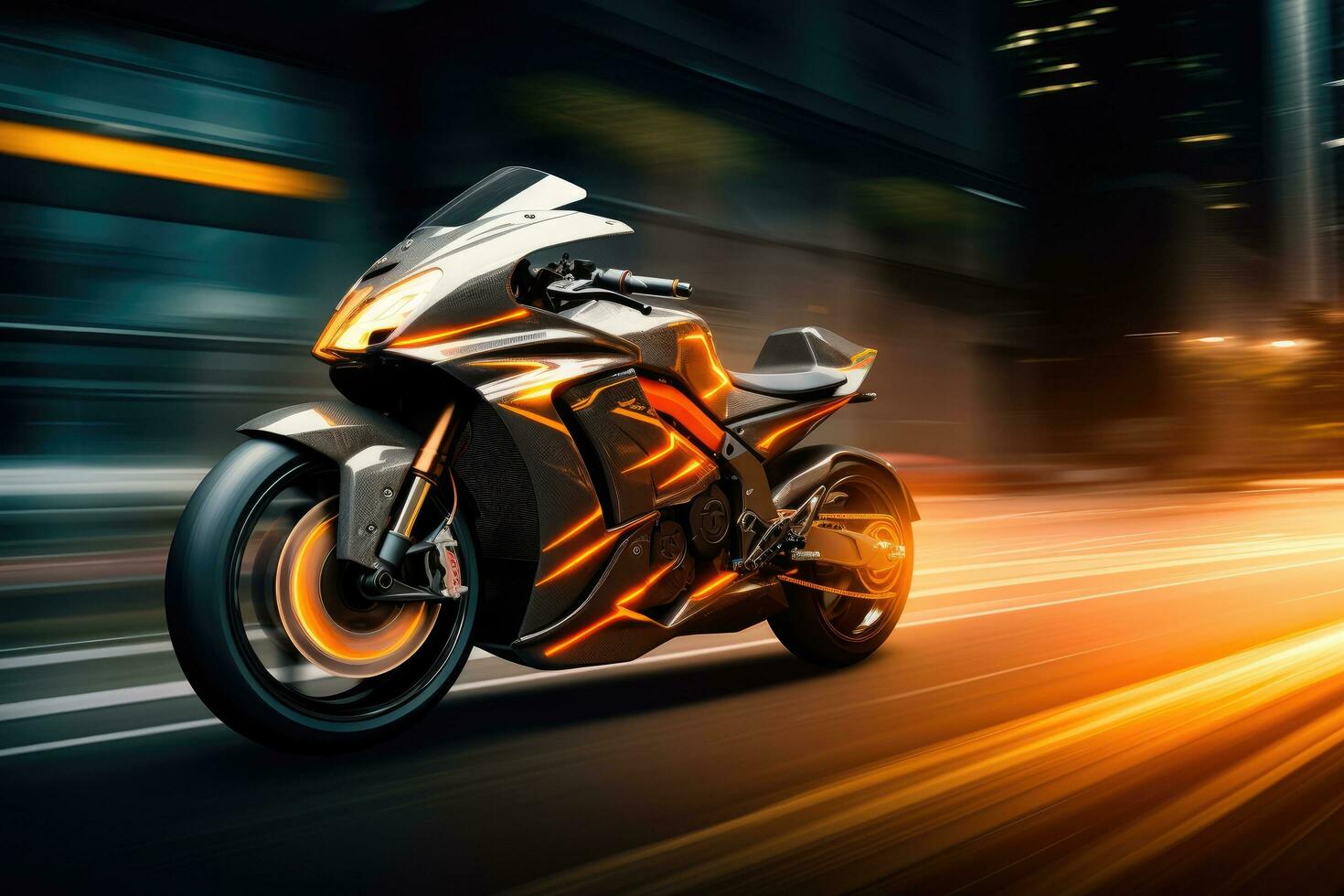As we delve into the world of AI-enhanced smart motorcycles, a new wave of innovation and technology unfolds before us. From redefining safety standards to optimizing performance, these intelligent machines are changing the way we ride. Join us on this journey as we explore the exciting realm of AI-enhanced smart motorcycles review.
In the following paragraphs, we will uncover key features, safety enhancements, performance optimizations, user experience improvements, and more in the realm of AI-enhanced smart motorcycles.
Introduction to AI-enhanced smart motorcycles

AI-enhanced smart motorcycles are cutting-edge vehicles that utilize artificial intelligence technology to enhance the riding experience and safety for motorcyclists. These motorcycles are equipped with advanced AI systems that can analyze data in real-time, make split-second decisions, and adapt to changing road conditions.
Key Features of AI-enhanced smart motorcycles:
- Collision detection and avoidance systems
- Adaptive cruise control
- Self-balancing technology
- Intelligent navigation systems
Benefits of Incorporating AI Technology into Motorcycles:
By integrating AI technology into motorcycles, riders can experience improved safety, enhanced performance, and increased convenience during their rides. AI systems can assist in preventing accidents, optimizing engine performance, and providing real-time traffic updates to riders.
How AI Enhances the Riding Experience and Safety:
- AI systems can analyze data from various sensors to detect potential hazards on the road and alert riders in advance.
- Smart motorcycles can automatically adjust speed and braking to maintain a safe distance from other vehicles.
- AI-enhanced navigation systems can suggest the best routes based on traffic conditions, weather, and rider preferences.
Examples of AI Technologies Used in Smart Motorcycles:
- Machine learning algorithms for predictive maintenance and performance optimization.
- Computer vision systems for object recognition and collision avoidance.
- Natural language processing for voice-activated controls and communication with the motorcycle.
AI-enhanced safety features

AI-enhanced smart motorcycles come equipped with a range of innovative safety features powered by artificial intelligence that significantly enhance rider protection and accident prevention compared to traditional motorcycles.
Collision Detection and Avoidance Systems
One of the key safety features of AI-enhanced smart motorcycles is the advanced collision detection and avoidance systems. These systems use sensors and cameras to monitor the motorcycle's surroundings in real-time, alerting the rider of potential collisions and even autonomously applying brakes or adjusting steering to avoid accidents.
Adaptive Cruise Control
AI technology enables smart motorcycles to have adaptive cruise control, which automatically adjusts the speed of the motorcycle to maintain a safe distance from vehicles ahead. This feature not only enhances rider comfort but also reduces the risk of rear-end collisions.
Enhanced Stability Control
AI-powered stability control systems in smart motorcycles continuously monitor factors like traction, lean angle, and road conditions to help riders maintain control and stability, especially in challenging situations such as slippery roads or sudden maneuvers.
Real-time Emergency Response
In the event of an accident, AI-enhanced smart motorcycles can automatically send alerts to emergency services, providing precise location data and crucial information about the rider's condition. This feature has been instrumental in saving lives by ensuring swift and efficient emergency response.
Comparing Safety Standards
When comparing the safety standards of AI-enhanced smart motorcycles with traditional motorcycles, it is evident that the integration of AI technology significantly raises the bar in terms of rider protection and accident prevention. The real-time monitoring, predictive algorithms, and autonomous intervention capabilities offered by AI systems make smart motorcycles a safer choice for riders.
AI-driven performance enhancements

AI technology plays a crucial role in enhancing the performance of smart motorcycles by optimizing various aspects such as engine performance, handling, responsiveness, fuel efficiency, and overall performance metrics.
Optimized Engine Performance
AI algorithms are utilized to analyze real-time data from sensors to adjust fuel injection, ignition timing, and other engine parameters. This optimization ensures that the engine operates at peak performance levels, delivering optimal power and torque output for various riding conditions.
Enhanced Handling and Responsiveness
Through AI-driven systems, smart motorcycles can adjust suspension settings, traction control, and braking systems based on factors like road conditions, rider input, and riding style. This leads to improved handling, stability, and responsiveness, making the bike more agile and safer to ride.
Impact on Fuel Efficiency
AI algorithms can optimize fuel consumption by adjusting throttle response, gear shifting patterns, and other parameters to achieve better fuel efficiency without compromising performance. This optimization leads to reduced fuel consumption and lower emissions, making smart motorcycles more environmentally friendly.
Examples of AI Algorithms
- Predictive analytics for anticipating maintenance needs and optimizing performance.
- Machine learning algorithms for adaptive cruise control to maintain a safe distance from vehicles ahead.
- Neural networks for real-time analysis of rider behavior and road conditions to enhance safety and performance.
User Experience and Connectivity
When it comes to smart motorcycles enhanced with AI technology, the user experience is taken to a whole new level. Let's delve into how AI contributes to enhancing connectivity and overall user satisfaction.
Enhanced Connectivity Features
- AI technology enables seamless connectivity between the rider and the motorcycle, allowing for a more intuitive and interactive riding experience.
- Through AI, smart motorcycles can connect to external devices and platforms, providing real-time data and updates for the rider.
- Connectivity features such as Bluetooth integration and Wi-Fi capabilities ensure that riders stay connected on the go.
Integration with Navigation, Entertainment, and Communication Systems
- AI integration with navigation systems allows for smart route planning based on real-time traffic data, weather conditions, and user preferences.
- Entertainment systems in smart motorcycles can be personalized through AI, providing music, podcasts, and other media tailored to the rider's tastes.
- Communication systems enabled by AI technology allow for hands-free calling, messaging, and voice commands, enhancing safety and convenience on the road.
Personalized Riding Experience
- AI algorithms analyze user behavior, preferences, and riding patterns to personalize the overall riding experience for each rider.
- By learning from past interactions, AI can adjust settings, recommend routes, and even anticipate the rider's needs, creating a truly customized experience.
- Personalization through AI not only enhances comfort and convenience but also fosters a deeper connection between the rider and their smart motorcycle.
Last Word
In conclusion, AI-enhanced smart motorcycles are not just vehicles; they are a glimpse into the future of transportation. With their advanced safety features, performance enhancements, and seamless connectivity, these motorcycles pave the way for a thrilling and secure riding experience.
Embrace the future today with AI-enhanced smart motorcycles.
General Inquiries
How does AI enhance the safety features of smart motorcycles?
AI enables smart motorcycles to analyze road conditions in real-time, detect potential hazards, and assist riders in avoiding accidents.
What are some examples of AI technologies used in smart motorcycles?
Examples include collision detection systems, adaptive cruise control, and automatic emergency braking, all powered by AI algorithms.
How does AI technology improve the performance of smart motorcycles?
AI optimizes engine performance, enhances handling through predictive analytics, and improves fuel efficiency by adjusting parameters on-the-fly.
What connectivity features are enabled by AI in smart motorcycles?
AI enables seamless integration with navigation systems for real-time updates, entertainment systems for personalized content, and communication systems for hands-free interaction.
How does AI personalize the riding experience for users?
AI learns from user preferences and riding habits to tailor settings like suspension stiffness, throttle response, and even music playlists, creating a unique and enjoyable experience for each rider.












